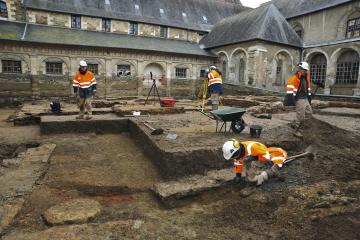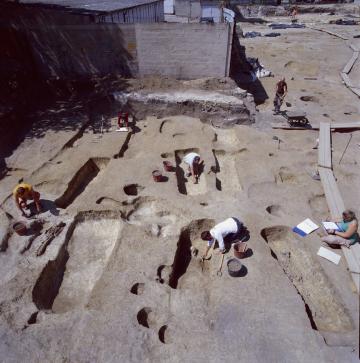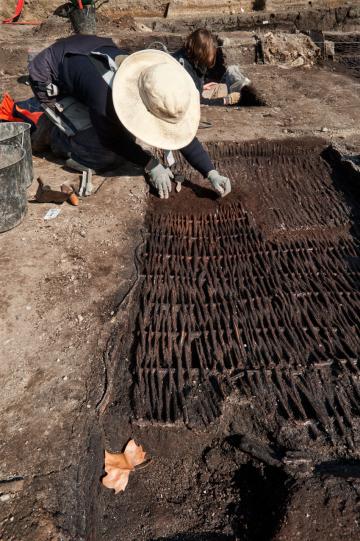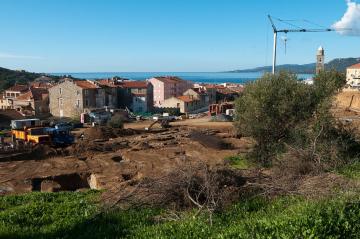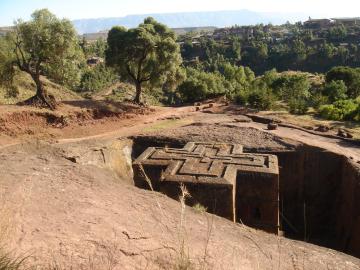You are here
News
- (-) Remove Middle Ages filter Middle Ages
Since December 2011, a team of Inrap archaeologists has been excavating the site of the Jacobins convent in Rennes. This work is curated by the State (Drac Burgundy). The site is located in the future location of the Rennes Métropole conference center and is one of the largest urban excavations ever realized in western France.
In the heart of the historic center of Strasbourg, classified as a World Heritage Site, a team of Inrap archaeologists are currently excavating the Place du Château at the foot of the cathedral. This work is curated by the State (Drac Alsace).
The district of Saint-Martin-du-Mont is located thirty kilometers to the north-east of Dijon. Before the construction of two private residences in the hamlet of Cestres, at "La vie aux Maires”, an INRAP team is currently excavating a medieval residence of the second half of the 14th century, which was rapidly abandoned at the beginning of the 15th century. This work is curated by the State (DRAC Burgundy).
For more than six years, several operations of preventive archaeology have been carried out in the centre of Bondy. The successive excavations have revealed, between the Church and the Hôtel de Ville, traces of ancient and medieval occupations, dating from the 3rd to the 11th centuries AD.
A team of archaeologists from Inrap is at present excavating, curated by the State (Drac, Regional Archaeological Service, Champagne-Ardenne), part of the mediaeval history of Troyes.
During the construction of a housing project at Propriano (Southern Corsica) by the Limat Promotion property group, Inrap archaeologists have unearthed, by order of the State (DRAC Corsica), a classical construction, a collection of churches and an Antique necropolis.
The Ethiopian authority of research and conservation of heritage (ARCCH), the French centre of Ethiopian studies (CFEE) and the French National Institute of Preventive Archaeology (Inrap) have just executed, during an exceptional mission, the topographic and archaeological map of the site of Lalibela, classified by UNESCO in 1978 as part of the world heritage of humanity.
Inrap and the UNESCO World Heritage Center have just signed an agreement ("letter of intention") to combine their efforts for the conservation and development of sites and monuments on the World Heritage of Humanity List (1972 Convention for the protection of natural and cultural sites, ratified by 186 States).


